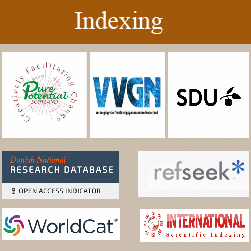Isolation and identification of bacteria and fungi associated with tomatoes
Author(s):
Asoso Oluwakemi Sola, Idris Olayinka Oluwatoyin, Ayodele Olawole Samuel, Laoye Babafemi John*
Lycopersicum esculentum (Tomato) is an important vegetable crop widely grown around the world. Their water content makes them susceptible to spoilage. This study was carried out to isolate, identify and characterize the bacteria and fungi associated with fresh and paste tomatoes collected from Oja-Oba Market in Ado-Ekiti. Standard microbiological protocols were followed in isolation, cultivation and biochemical identification of microorganisms. Bacteria identified included Listeria monocytogenes, Bacillus subtilis, Lactobacillus fermenti, Pseudomonas stutzeri and Rothia sp. While the fungi identified included Penicillum notatum, Saccharomyces sp., Aspergillus niger, Aspergillus flavus, Mucor mucedo, Aspergillus fumigatus and Rhizopus stolonifer. The mineral composition showed that potassium had the highest concentration; 642.230.18 mg/kg while lead showed the least concentration; 0.0010.00 mg/kg. Chemical properties revealed that moisture in fresh tomatoes had the highest concentration of 90.460.14% and fat had the lowest concentration in fresh tomatoes; 0.820.02%. The phytochemical of tomato extracts in qualitative screening showed Alkaloid and phenol are most present while the quantitative screening showed that phenol had the highest concentration; 33.360.00 mg/g and Anthraquinones showed the lowest concentration; 0.020.002 mg/g. Polymerase chain reaction (PCR) amplification was done using gene primers GC-Clamp-EUB f933 and EUB r1389 for bacteria while GMF1 and GMF2 primer were used for fungi with 100bp (base pair) ladder molecular weight marker. This work revealed Rothia sp. as the highest occurring bacteria and Aspergillus fumigatus for fungi. The isolates produce toxins and hereby pose a potential risk to consumers; keeping fresh tomatoes in an uncontrolled environment for about three days or more is not safe for human consumption and this could lead to food poisoning and food-borne illness



